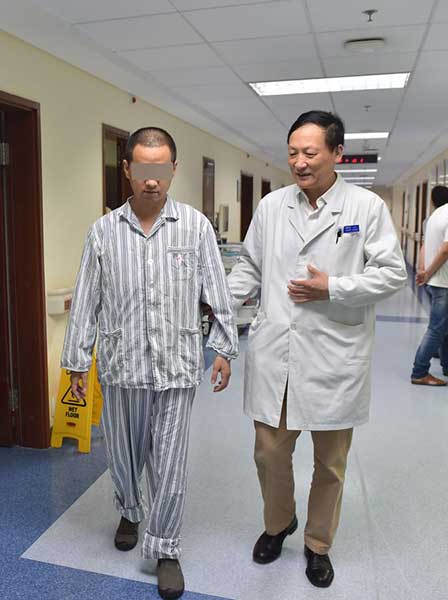Chinese doctors succeed in rare 3D-printed vertebrae implant
 |
|
[Photo/Xinhua] |
"The 3D printing technology offers a better option. It enables us to produce a replica resembling Yuan's original bone structures, both in shape and length, and it is firm," Liu said.
The implant also has tiny pores that allow neighboring bone cells in normal vertebrae to grow. This will help with fusion of the replica and real bones, he said.
Yuan was diagnosed with chordoma, a rare cancer that can occur anywhere in the spine and skull, in December after suffering acute lower back pain. In January, he turned to the Peking University Third Hospital, which has a research team that has studied 3D-printing for orthopedics since 2009.
"I believe in the new technology. I've prepared myself for risks. My disease can't be treated in the conventional way and it makes no sense for me to wait," said Yuan, who works in the catering industry in Beijing and has a five-year-old daughter.
Yuan said he was able to walk with crutches two weeks after the surgery. A portion of his medical costs was exempted because of the experimental nature of the treatment, he said.
The team developed the only two 3D-printed body implant products registered by the China Food and Drug Administration, which include a hip joint product and the vertebrae product approved in September 2015 and May respectively.
















